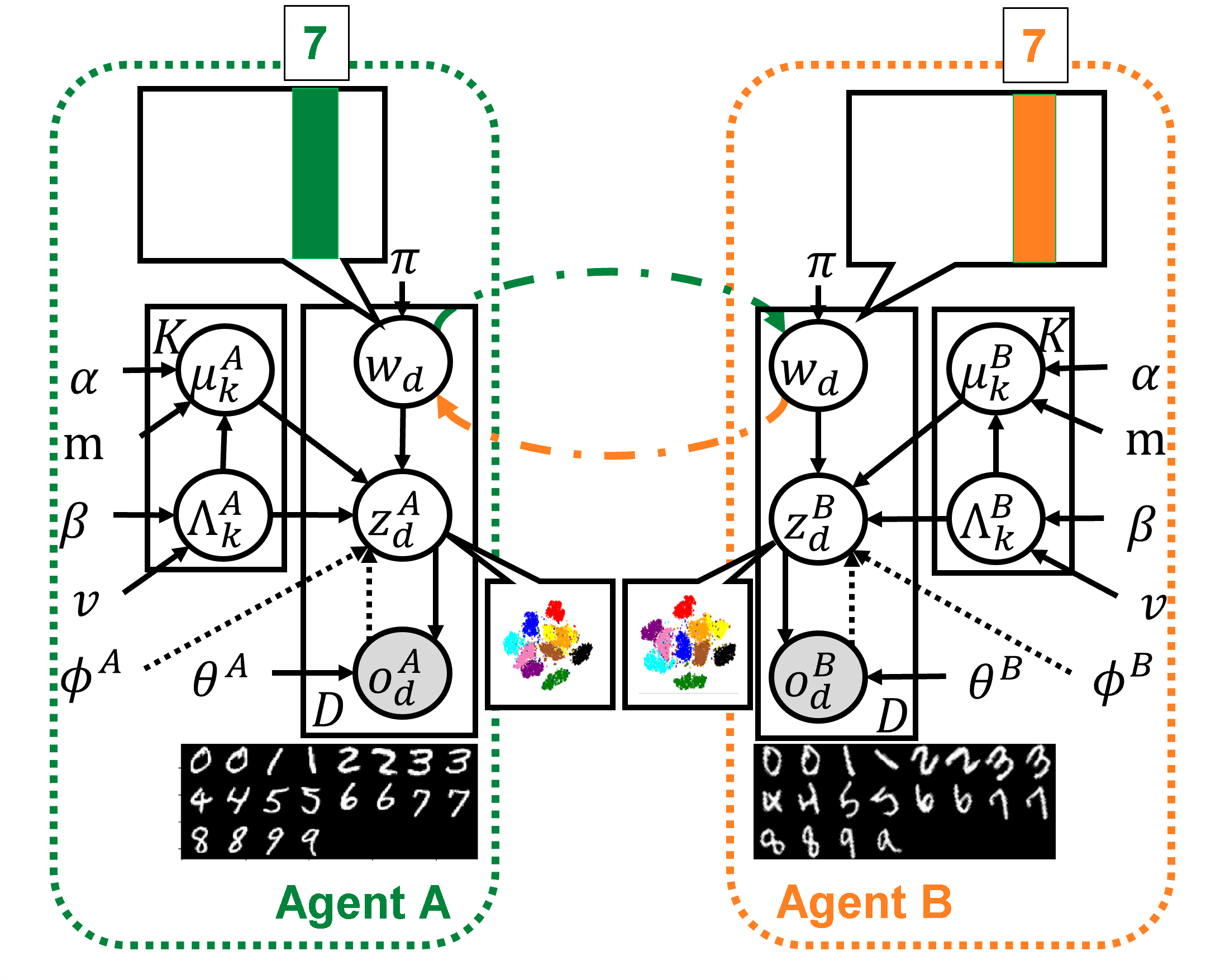Emergent Communication through Metropolis-Hastings Naming Game with Deep Generative Models
Constructive studies on symbol emergence systems seek to investigate computational models that can better explain human language evolution, the creation of symbol systems, and the construction of internal representations. This study provides a new model for emergent communication, which is based on a probabilistic generative model (PGM) instead of a discriminative model based on deep reinforcement learning. We define the Metropolis-Hastings (MH) naming game by generalizing previously proposed models. It is not a referential game with explicit feedback, as assumed by many emergent communication studies. Instead, it is a game based on joint attention without explicit feedback. Mathematically, the MH naming game is proved to be a type of MH algorithm for an integrative PGM that combines two agents that play the naming game. From this viewpoint, symbol emergence is regarded as decentralized Bayesian inference, and semiotic communication is regarded as inter-personal cross-modal inference. This notion leads to the collective predictive coding hypothesis} regarding language evolution and, in general, the emergence of symbols. We also propose the inter-Gaussian mixture model (GMM)+ variational autoencoder (VAE), a deep generative model for emergent communication based on the MH naming game. The model has been validated on MNIST and Fruits 360 datasets. Experimental findings demonstrate that categories are formed from real images observed by agents, and signs are correctly shared across agents by successfully utilizing both of the observations of agents via the MH naming game. Furthermore, scholars verified that visual images were recalled from signs uttered by agents. Notably, emergent communication without supervision and reward feedback improved the performance of the unsupervised representation learning of agents.
PDF Abstract


